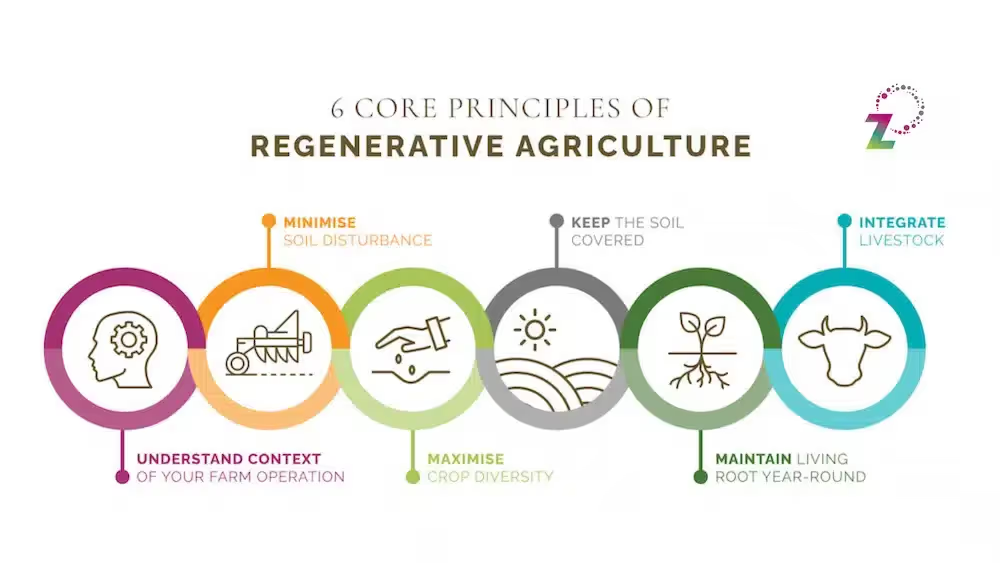Uncovering the True Toll of Our Global Agrifood Systems
The FAO's 2023 report introduces the concept of hidden costs and benefits within agrifood systems, offering a robust framework for assessing their impact.

The world’s agrifood systems, essential for global sustenance and economic stability, impose an often unnoticed toll on our health, environment, and society. The recent revelations by the Food and Agriculture Organisation (FAO) in 2023 edition of The State of Food and Agriculture (SOFA) have shed light on the obscured expenses these systems impose, demanding immediate action and transformation.
The FAO’s 2023 report introduces the concept of hidden costs and benefits within agrifood systems, offering a robust framework for assessing their impact across 154 countries. Although there have been other attempts at measuring the hidden costs of agrifood systems, the new FAO report is the first to disaggregate these costs down to the national level and ensure they are comparable across cost categories and between countries. The FAO’s report underlines the necessity for comprehensive and routine analysis of these hidden costs via true cost accounting, followed by decisive actions to mitigate their detrimental effects.
Overall, the report’s findings unearth a staggering reality: these concealed expenditures amount to a monumental $10 trillion annually, constituting nearly 10% of the world’s Gross Domestic Product (GDP).
Understanding the weight of hidden costs
The greatest among these hidden costs, exceeding 70%, stem from the ramifications of unhealthy diets prevalent in wealthier nations. These dietary patterns, laden with ultra-processed foods, fats, and sugars, not only fuel obesity and non-communicable diseases but also lead to substantial labour productivity losses.
Learn more about the link between soil health, plant health, and human health.
Simultaneously, the environmental toll is significant, accounting for a fifth of the total costs. Greenhouse gas emissions, nitrogen emissions, land-use alterations, and water usage contribute significantly to these costs, impacting all nations. (Note: the report acknowledges the potential underestimation of these impacts due to data constraints.)
Disproportionate impact on vulnerable nations
What’s most concerning is the disproportionate impact on low-income countries, where these hidden costs translate to over a quarter of their GDP. The core of these costs emanates from poverty and undernourishment, acting as a substantial barrier to progress and development.
Strategies to minimise hidden costs of agrifood systems
The roadmap to mitigating these hidden costs involves a multifaceted approach:
- Crop diversification: Encouraging crop diversification and rotation to enhance soil fertility, reduce the risk of pests and diseases, and improve overall resilience in agriculture.
- Climate-resilient crop varieties: Integrating traditional agricultural knowledge with modern scientific methods to identify and utilise crop varieties historically resilient to local climate conditions.
- Precision irrigation techniques: Maximising water use efficiency through techniques like drip and sprinkler irrigation to reduce environmental impacts and optimise agricultural productivity.
- Government policy changes: Implementing policy changes that use taxation, subsidies, and legislation to incentivise sustainable agricultural practices and mitigate hidden costs.
- Building equity in agrifood business: Emphasising intergenerational, intragenerational, and interspecies justice in agricultural practices to ensure equitable distribution of resources and protection of biodiversity.
Regenerative agriculture as part of the solution
Regenerative agriculture holds immense potential to mitigate the hidden costs prevalent in conventional agrifood systems. By embracing practices that focus on soil health, biodiversity, and ecosystem resilience, regenerative agriculture presents a pathway to minimise these hidden costs significantly.
- Soil health improvement: Regenerative agriculture employs practices like minimal soil disturbance, cover cropping, and diverse crop rotations, enhancing soil health by fostering microbial biodiversity, increasing organic matter, and improving soil structure.
- Carbon sequestration: Through techniques such as agroforestry, rotational grazing, and no-till farming, regenerative agriculture acts as a carbon sink, capturing atmospheric carbon dioxide and storing it in the soil, thus mitigating climate change impacts.
- Biodiversity conservation: By promoting diverse cropping systems, agroforestry, and habitat restoration, regenerative agriculture supports natural pest control, reduces reliance on pesticides, and fosters habitats for pollinators, diminishing environmental damage and health issues linked to pesticide usage.
- Water conservation and quality: Practices like mulching, contour farming, and water-efficient irrigation systems in regenerative agriculture reduce water runoff, enhance water infiltration, and minimise water contamination, addressing health-related costs and environmental degradation.
- Economic resilience and community well-being: Community-centric regenerative agriculture supports local economies, enhances food security, and reduces economic vulnerabilities, offering sustainable livelihoods and fostering resilient communities to mitigate hidden social costs linked to poverty and food insecurity.
- Reduced input dependency: Regenerative agriculture’s focus on natural processes over synthetic inputs decreases the reliance on external inputs, reducing economic burdens and potential health hazards associated with chemical usagewhile promoting sustainability.

Towards a sustainable future
The FAO’s report isn’t just an exposé; it’s a call to action for a comprehensive and equitable transformation of our agrifood systems. It underscores the urgency for collaboration among policymakers, private-sector entities, researchers, and consumers to enact tangible change.
In the words of FAO Director-General QU Dongyu, “In the face of escalating global challenges: food availability, food accessibility and food affordability; climate crisis; biodiversity loss; economic slowdowns and downturns; worsening poverty; and other overlapping crises, the future of our agrifood systems hinges on our willingness to appreciate all food producers, big or small, to acknowledge these true costs, and understand how we all contribute to them, and what actions we need to take. I hope that this report will serve as a call to action for all partners – from policymakers and private-sector actors to researchers and consumers – and inspire a collective commitment to transform our agrifood systems for the betterment of all.”
The time for transformative measures that safeguard our health, environment, and society is now. It’s time to reshape our relationship with the planet and create a sustainable and just future for all.
Get in touch with RegenZ to learn more about our regenerative solutions for the commercial and smallholder agriculture sector.
About the Author

.png)



.avif)

